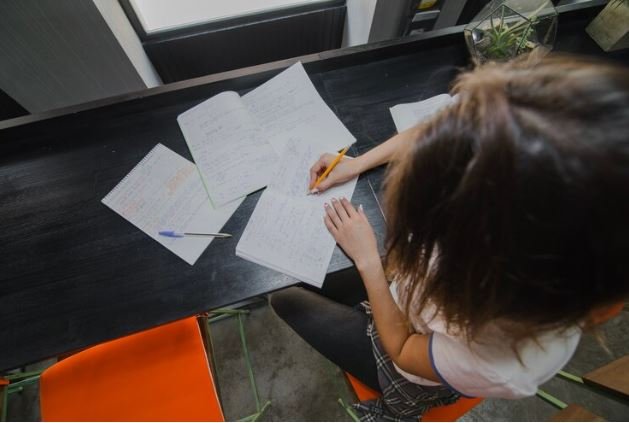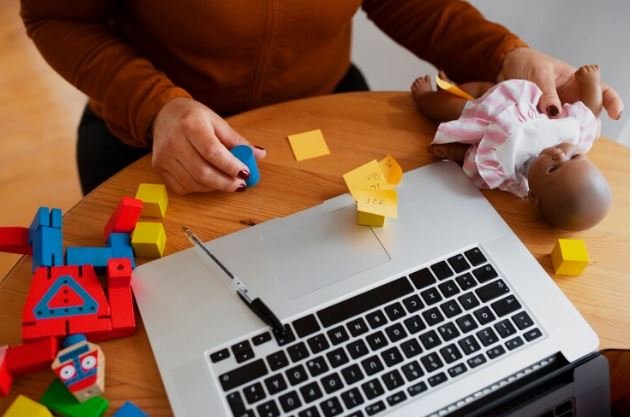A case study is a detailed story that shows real-life situations or problems and explains how they were solved. It helps people learn by looking at examples of what happened in the past.
Case study examples for students mean examples of these stories that can help students understand different topics better. Case studies are like lessons or examples from real life, making them easy to understand and apply to similar situations.
What Is a Case Study?
A case study is like a small story that shows how someone or a group faced a problem, the steps they took to solve it, and the results they achieved.
It’s a way of learning from real experiences, showing students what they can do in similar situations. Teachers use case studies to help students think about what they would do in certain situations and to understand how others have solved similar problems.
Each case study has a problem, actions taken to solve it, and an outcome. By reading a case study, students can learn about challenges, decision-making, and solutions.
For example, a case study about saving a school garden might show students how teamwork and planning can help overcome challenges like weather, pests, or lack of funds.

Why Case Studies Are Important for Learning
Case studies are important because they provide real examples that make learning more interesting and relatable. Instead of just hearing facts or theories, students see real-world applications of what they are learning. This helps students remember what they learn and understand how to use it in their own lives.
Case studies also encourage critical thinking. When students read a case study, they think about how the people in the story solved the problem and whether they would do something similar. This helps them develop problem-solving skills and teaches them that there may be multiple ways to approach a problem.
Finally, case studies help build empathy and understanding. By seeing real-life challenges faced by people, students learn to appreciate the struggles and successes of others. It helps them see different perspectives and understand that everyone has unique experiences and solutions.
Types of Case Studies
There are different types of case studies, each focusing on a specific area of study. Here are a few examples:
- Business Case Studies: These case studies show real-life business situations, such as how a company increased its profits, launched a new product, or solved a customer complaint. Business case studies help students understand how companies make decisions, handle challenges, and grow.
- Science Case Studies: Science case studies explore discoveries, inventions, and environmental challenges. They might show how scientists solved a problem, like curing a disease or cleaning up pollution. These case studies help students learn about the scientific process and inspire curiosity.
- Environmental Case Studies: These focus on nature and environmental issues. An example could be how a community worked to save a forest or reduce waste. Environmental case studies teach students the importance of protecting the planet and show real examples of how people can make a difference.
- Social Studies Case Studies: Social studies case studies look at events in history, culture, or society. They might explore how a country developed a new law or how people organized for change. These examples help students understand history and the impact of decisions on society.
Each type of case study shows a different area of life and learning, helping students see how they can apply knowledge in many areas.
Case Study Example 1: Saving a Coral Reef
In this case study, we learn about a small island community that noticed their coral reef was dying. Coral reefs are important because they provide food and shelter for many ocean creatures. The people on the island were worried because the reef’s health was important for their fishing and tourism industries.
The community worked together to create a plan. First, they stopped fishing near the reef to give it a chance to recover. They also cleaned up the beaches and reduced pollution from boats.
Scientists joined in, helping them understand what was harming the coral and suggesting ways to protect it. Over time, the reef began to recover, and the community learned that taking care of their natural resources was essential for their survival.
This case study teaches students about environmental protection, teamwork, and how small actions can lead to big changes. It shows that when people work together, they can solve big problems and protect their resources for the future.

Case Study Example 2: Launching a New Snack Business
In this case study, a group of students wanted to start their own snack business to raise money for a school trip. They had to decide what type of snacks to make, how much to sell them for, and where to sell them. They researched their options and asked their classmates which snacks they liked best.
The students chose to make healthy snacks, like granola bars and fruit cups, because they knew many people were interested in healthy eating. They bought the ingredients, made the snacks, and set up a stand at school events. They worked together to manage their money and learned how to attract customers by making posters and offering samples.
The business was a success, and the students raised enough money for their trip. This case study teaches students about planning, teamwork, budgeting, and creativity. It shows that starting a business requires careful planning and effort and that working together can help people achieve their goals.
Case Study Example 3: Building a Community Garden
This case study is about a neighborhood that wanted to build a garden where people could grow fruits and vegetables. The goal was to provide fresh produce and create a space where neighbors could gather and learn from each other. The community faced challenges, like finding a suitable location and getting permission to use the land.
The neighbors held meetings to discuss their ideas and organized a team to take care of the garden. They got help from local businesses, who donated seeds and tools.
People in the community took turns watering the plants, pulling weeds, and picking vegetables when they were ready. Soon, they had a thriving garden that provided food and brought people together.
The garden became a place where neighbors could relax and spend time together, learning about gardening and helping each other. This case study shows the power of teamwork, planning, and the benefits of working together for a common goal.
How Case Studies Help with Problem Solving
Case studies help students learn how to solve problems by showing real examples of people facing challenges. When students read these stories, they think about how the people in the case study made decisions and how those decisions helped or hurt their situation. This process helps students develop their own problem-solving skills by thinking through different scenarios.
For instance, in the community garden case study, students learn that it’s important to plan and communicate when working with others. They also learn that it’s helpful to ask for support from the community, like getting donations from local businesses. By seeing how others solved problems, students can think about what they would do in a similar situation.

What Students Can Learn from Case Studies
Students learn a lot from case studies. Here are some key lessons:
- Teamwork: Case studies show how working together can make it easier to solve problems. Whether it’s a group of students, a neighborhood, or a business team, people often achieve more when they work together.
- Planning and Organization: Many case studies show the importance of making a plan. Planning helps people think about what steps they need to take, what tools they need, and how to reach their goals.
- Creativity and Innovation: Case studies encourage students to think creatively. Sometimes, solving a problem requires new ideas, like using recycled materials in the community garden or finding creative ways to attract customers in the snack business.
- Resilience and Patience: Case studies often show that success doesn’t come easily and that people face setbacks. Students learn the importance of being patient and not giving up, even when things are difficult.
- Communication: In many case studies, people have to communicate their ideas to others to make sure everyone is on the same page. Good communication helps groups work together and avoid misunderstandings.
These lessons help students build important skills they can use in school and later in life.
How Teachers Use Case Studies in the Classroom
Teachers use case studies in the classroom to make learning more interesting and relatable. They might read a case study aloud and then ask students questions about it, encouraging them to think critically. Some teachers ask students to work in groups to discuss the case study, which helps them practice teamwork and communication.
Teachers can also use case studies to introduce new topics. For example, before teaching a lesson on recycling, a teacher might share a case study about a city that reduced waste through a recycling program. This helps students understand why recycling is important and how it works in real life.
Conclusion
Case studies are a powerful tool for learning because they show real-life examples of people facing challenges and solving problems. Students learn about teamwork, planning, creativity, and communication by reading case studies. They also get to practice critical thinking and see how different solutions can work in different situations.
Whether it’s saving a coral reef, starting a small business, or building a community garden, case studies provide valuable lessons and help students understand how they can make a positive impact in their own lives and communities. Through these real-world stories, students are inspired to think, learn, and grow as they explore different ways to face challenges and achieve goals.


